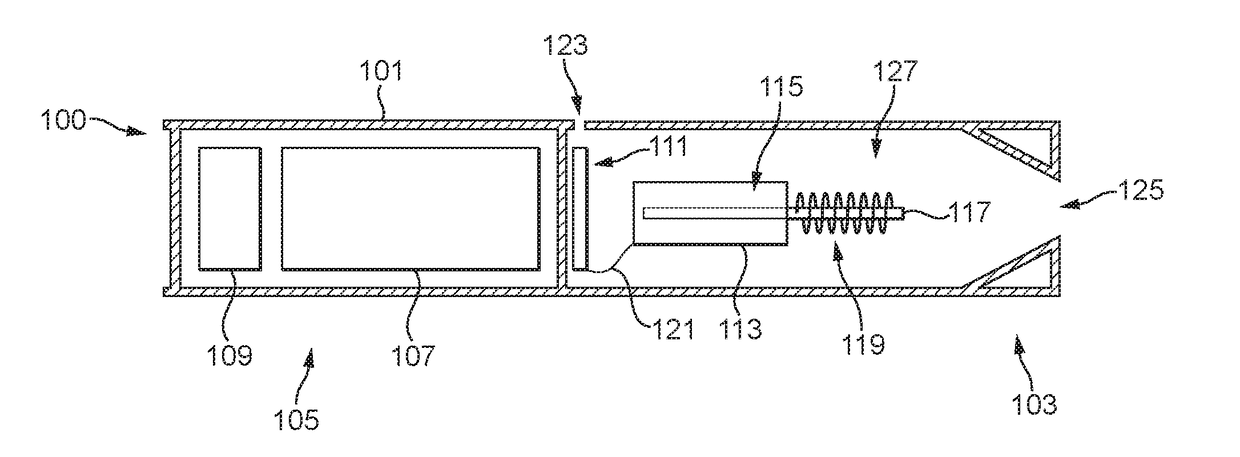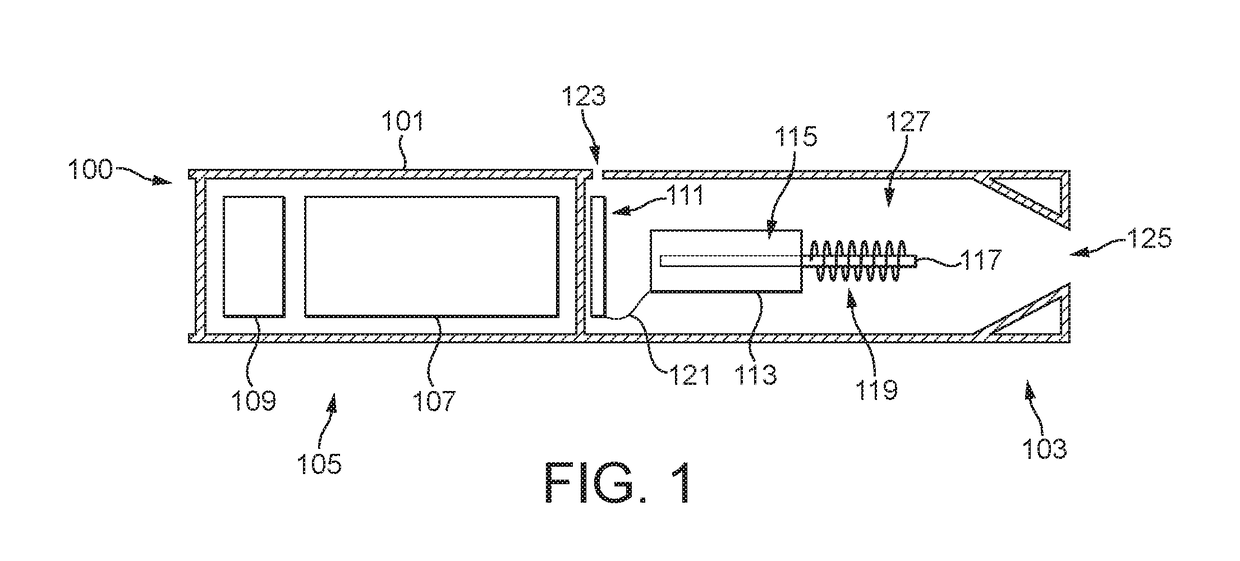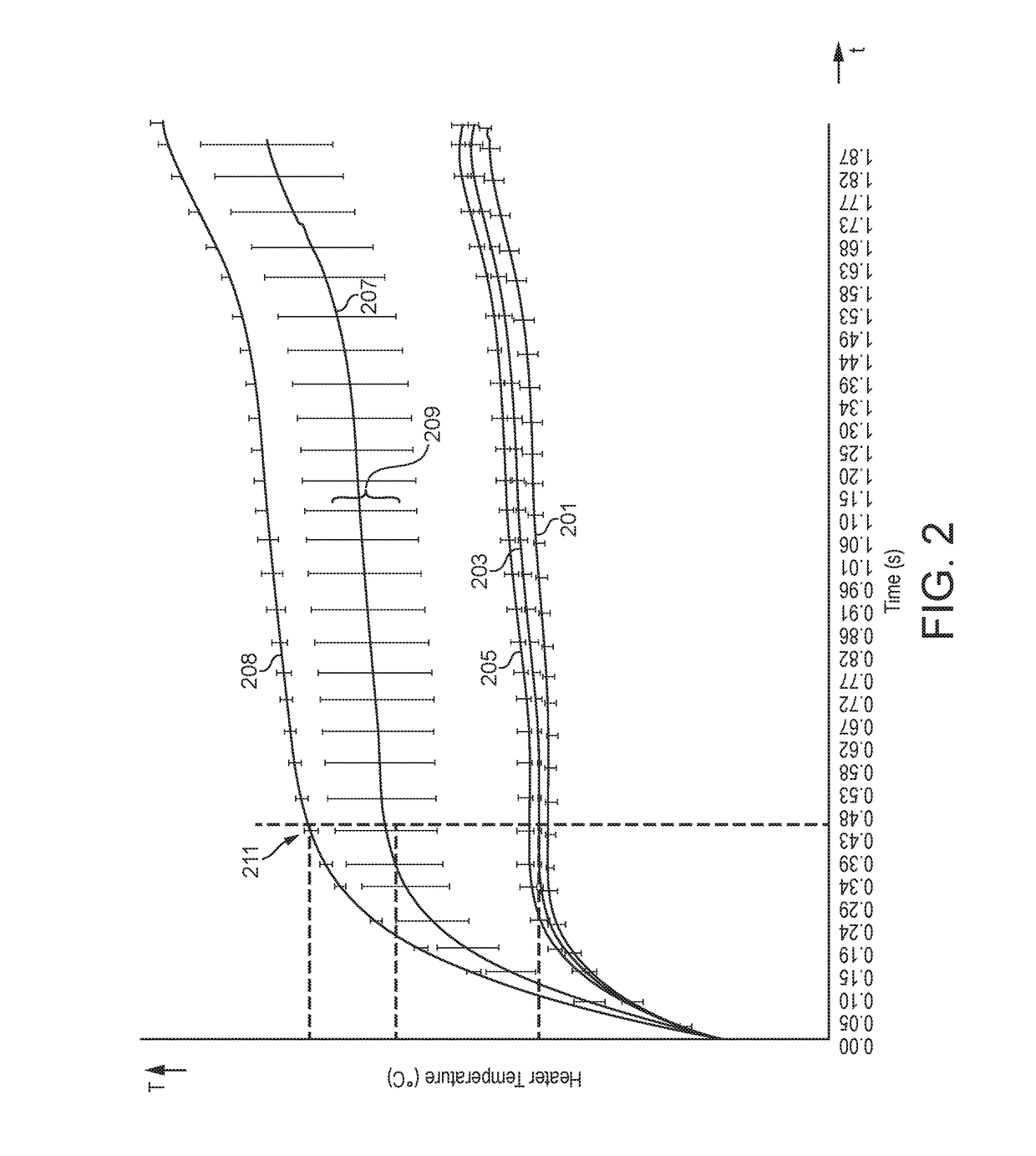Aerosol-generating systems with liquid level determination and methods of determining liquid level in aerosol-generating systems
a technology of aerosol-generating systems and liquid level determination, which is applied in the direction of liquid/fluent solid measurement, tobacco, instruments, etc., can solve the problems of liquid level only being determined, liquid depletion only being determined
- Summary
- Abstract
- Description
- Claims
- Application Information
AI Technical Summary
Benefits of technology
Problems solved by technology
Method used
Image
Examples
first embodiment
[0120]Liquid level based on wicking rate can be determined in a number of ways. FIG. 5 illustrates a control process configured to determine liquid level by determining wicking rate based on a single heater activation. The process of FIG. 5 relies on an assumption that following a heater activation to vaporize liquid in the wick, the level of liquid in the vicinity of the wick is consistent. So a measure of liquid level immediately after an activation of the heater is not measured but has been determined during a calibration process during manufacture or device development.
[0121]FIG. 5 illustrates the activation of the heater over time. In FIG. 5 power is applied to the heater in response to air being drawn through the system and through the outlet (referred to herein as an “air draw” and / or “draw of air”), as illustrated by vaporizing period 500. The application of power to the heater in response to the air draw being ended at time t0. At time t0 the liquid in the wick is depleted ...
second embodiment
[0123]FIG. 6 is a control process configured to determine liquid level based on two heater activations. In FIG. 6 power is applied to the heater in response to air being drawn through the system and through the outlet thereof, as illustrated by vaporizing period 600. The application of power to the heater in response to the draw of air being ended at time t0. At time t0 the liquid in the wick is depleted as a result of vaporization. At time t1, which is a set period after to, power is applied to the heater again for a second period 610. The second period 610 is shorter than the vaporizing period 600 and is sufficiently short that the heater does not reach the vaporization temperature of the liquid. At time t2, which is at or close to the end of the second period 610, the temperature of the heater is measured. At time t3, which is a set period after to, power is applied to the heater again for a third period 620. The third period 620 is also shorter than the vaporizing period 600 and...
PUM
 Login to View More
Login to View More Abstract
Description
Claims
Application Information
 Login to View More
Login to View More - R&D
- Intellectual Property
- Life Sciences
- Materials
- Tech Scout
- Unparalleled Data Quality
- Higher Quality Content
- 60% Fewer Hallucinations
Browse by: Latest US Patents, China's latest patents, Technical Efficacy Thesaurus, Application Domain, Technology Topic, Popular Technical Reports.
© 2025 PatSnap. All rights reserved.Legal|Privacy policy|Modern Slavery Act Transparency Statement|Sitemap|About US| Contact US: help@patsnap.com



